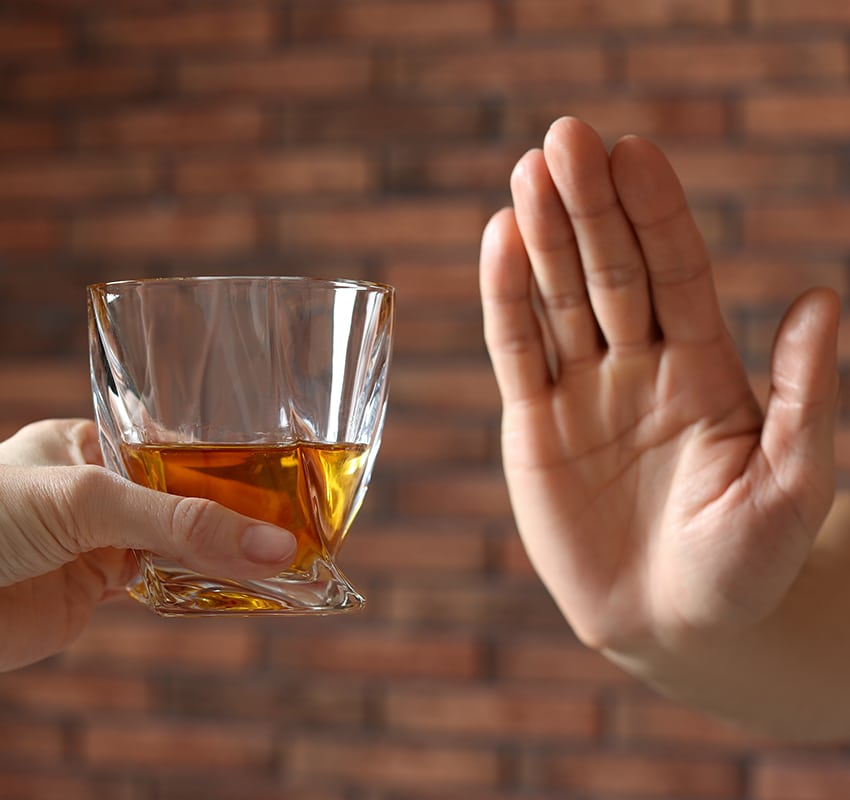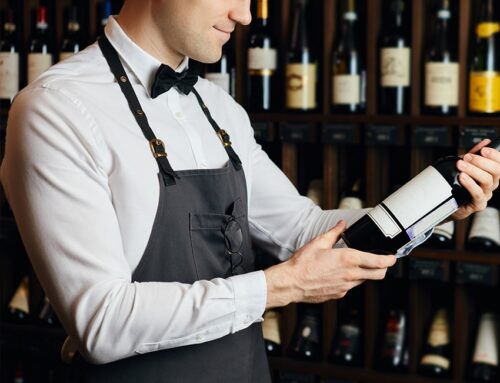Exploring the Rationale Behind the Ban on Hard Liquor Ads
Let’s take a deep dive into the intricate world of alcohol advertising, where government regulations and marketing strategies for hard liquor ads intersect with public health concerns. We’ll examine why restrictions are imposed on alcoholic beverage advertisements, discover how these bans affect youth drinking habits, and explore which agencies have authority in this field while observing powerful promotional techniques employed by companies. Are you ready to begin?
Key Takeaways
- Hard liquor industry has voluntarily imposed an advertising ban since 1948 to protect young people from exposure.
- Government agencies such as the FTC and ATF regulate alcohol advertising while broadcasters have implemented a voluntary ban on certain types of advertisements.
- Self-regulation is important for promoting responsible practices in the alcohol industry, although it faces challenges with enforcement and accountability.
The History of Hard Liquor Advertising Bans
For many years, the concept of banning alcohol advertising has been a highly contentious issue. The Distilled Spirits Council made up of leaders in both broadcasting and alcoholic beverage industries, voluntarily agreed to stop airing these types of advertisements in 1948 in an effort to lessen potential problems associated with alcohol and protect young people from exposure to it through promotional materials like alcohol advertisements or liquor price advertising lists on national airwaves. This decision resulted in immense changes regarding how much promotion can be seen for certain liquors around America today.
Broadcasters’ Voluntary Ban
Broadcasters have taken the voluntary decision to disallow certain types of advertisements, such as those promoting alcohol consumed and gambling, to protect young people from early exposure to alcohol marketing campaigns. The purpose of this self-enforced ban on alcoholic promotions is to minimize young people’s exposure to alcohol marketing campaigns so that they can be kept from potentially drinking too early in life.
The consequences brought about by this initiative are multifaceted. It not only works toward decreasing teenage consumption rates but also promotes ethical advertising practices throughout different industries like the liquor industry. This type of behavior encourages responsible messaging toward consumers which makes a huge difference across all spheres related to advertising broadcasting services
The Role of Government Agencies in Regulating Alcohol Advertising
The Federal Trade Commission (FTC) and the Bureau of Alcohol, Tobacco, Firearms, and Explosives (ATF) have an authoritative role in monitoring alcohol advertising under the mandate of the Federal Alcohol Administration Act. This has prompted firms operating within this industry to impose a set of self-regulatory protocols alongside these federal regulations. As a result, government agencies have the authority to regulate how companies sell their alcoholic products—a responsibility that will not be taken lightly by either side involved for obvious reasons.
FTC’s Deceptive Advertising Authority
The FTC is authorized to monitor deceptive advertising practices in the alcohol sector. When such unfair acts or business strategies cause significant harm to consumers that cannot be avoided and outweigh potential advantages for them or competition, the Commission has a right of action against it.
In order to take action on promotional campaigns aimed at minors related to alcoholic drinks, they must prove this kind of advertisement produces substantial damage. Failure by involved parties will result in civil penalties being applied as punishment.
FCC’s Jurisdiction
The Federal Communications Commission (FCC) regulates interstate and international communications via cable, radio, TV, satellite and wire. Its powers also extend to matters which it does not have explicit statutory authority for. In particular there is a memorandum of understanding between the FCC and FTC in relation to alcohol advertising – this effectively places the governing body as being within the jurisdiction of the FTC thus restricting what power over such activity that falls on the shoulders of the FCC. Hence they are unable to provide any rules or regulations with regard alcoholic ads – something instead handled by their counterpart organisation’s remit.
Impact of Alcohol Advertising on Youth Drinking Behavior
The potential impact of alcohol advertising on the drinking habits of young people has raised concern, and consequently examining its repercussions is essential. In order to fully understand this issue we must analyze their exposure to such ads and if that encourages them drink or not. It’s important to look at how these adverts shape youth behavior in terms of brand loyalty when it comes to consuming alcoholic beverages.
Exposure to Alcohol Ads and Initiation of Drinking
Exposure to alcohol advertising and promotional activities has been linked with subsequent alcohol consumption amongst young people, as evidenced by a randomized control trial in the Netherlands which showed that those who viewed commercials for alcoholic drinks consumed more than double of what was drunk by their peers without such exposure. Similarly, viewing clips featuring high-alcohol content led participants to consume 2.38 glasses compared to just 1.73 from low-alcohol videos – Underlining this link between marketing material & youth drinking behaviour .
Broadcast and print media have received substantial attention on how they advertise or promote products containing liquor. However, there are also a number of indirect methods, such as videos of sports or music events, TV shows that highlight consumption, and retail promotions. Despite these methods remain largely unstudied due current concerns around risk of bias & accuracy issues found therein.
Despite potential inaccuracies based upon limited studies conducted thus far, it’s undeniable that ads can influence underage individuals’ attitude towards utilizing booze items. Consequently highlighting why responsible usage strategies should be adhered whilst promoting any sort of liquids/drinks classified as ‘alcoholic’. As such, additional research is greatly needed so we may gain an even greater understanding into Alcohol Ads & its correlating effects when ingested within society’s younger age brackets.
Alcohol Marketing and Brand Allegiance
Research shows that alcohol marketing and brand loyalty can have an impact on youth drinking. There is a correlation between the exposure of young people to alcoholic advertising or promotional activity, and their later consumption of alcohol – though the magnitude is small. For each advertisement seen, studies suggest 1% more drinks were consumed as well as there being a strong association found between how often TV programs/music videos are viewed with amount of booze ingested when out socially. Thus underlining why we should strive for responsible practices concerning promotion so as to reduce its effect on underage drinking habits.
First Amendment Concerns and Commercial Speech
The intersection between alcohol advertising, the First Amendment and commercial speech poses specific issues. The relationship between these factors and how they affect the industry as a whole will be covered in this article.
Central Hudson Test
The Central Hudson test is a legal examination to check if regulations of commercial speech violate the First Amendment. This three-part assessment requires that there must be substantial governmental interest in restriction, it should advance this aim and not go beyond what’s needed for reaching it. It helps ensure enforcement actions do not interfere with accurate non-misleading expression or communication. Corrective advertising or confirming statements are allowable as long as they don’t transcend their purpose which is preventing trickery.
Court Decisions on Alcohol Advertising Bans
The courts have ruled that alcohol advertising is entitled to the protection of the First Amendment as long as it does not advocate criminal activity or deceive customers. Virginia Pharmacy v. Virginia Consumer Council and 44 Liquormart, Inc. v Rhode Island both serve to support this stance by rejecting bans on said marketing under free speech laws. While there are limits in place for enforcement purposes ,the industry can keep their promotional messages running without infringing upon these rights .
Public Health Concerns and Alcohol Advertising Restrictions
Given the potential consequences of alcohol advertising on public health, it is essential to examine how restrictions on this type of marketing affects people’s consumption levels. In this section, we will address the concerns associated with drinking alcoholic beverages, general patterns of use, and whether limiting advertisements can be effective in reducing consumers’ intake.
Alcohol-Related Problems and Consumption Patterns
It is widely acknowledged that alcohol advertising has the potential to prompt increased drinking, which can have damaging repercussions on public health. Regular consumption of alcoholic beverages can result in different forms of poor wellbeing such as mental and behavioral issues, addiction or dependence problems related to alcohol intake plus an assortment diseases all connected with excessive use.
Different people consume varying amounts. Yet it is well-known that overconsumption leads to adverse outcomes including a greater risk for disease and medical conditions, criminal activity along with highway accidents. Moderate low-risk drinking practices are recommended to avoid the problems connected with heavy drinking.
Effectiveness of Advertising Bans in Reducing Consumption
Research into the efficacy of advertising bans to reduce alcohol consumption has had mixed results. A randomized control trial conducted showed a statistically significant decrease in alcohol intake among young men who were not exposed to any advertisements, as opposed those that saw them. This evidence was found too be of low quality and so did not provide great confidence about these effects. Studies also involving ITS yielded similarly weak results suggesting an ineffective relationship between such measures and drinking habits.
It is likely that banning ads will have little impact on overall levels of public health related to liquor use, but more research needs conducting if we are gain accurate insight regarding their effectiveness or otherwise.
The Role of Self-Regulation in the Alcohol Industry
The alcohol industry is heavily impacted by governmental regulations and restrictions. Self-regulation also plays a fundamental part in sustaining responsible advertising practices. This section will analyze the role of self-regulation within this sector, its protocols and procedures as well as any limitations or problems linked to it.
Self regulation has become an essential component for businesses operating in the alcohol market – from establishing guidelines that ensure ethical promotion techniques are being used through to monitoring those policies themselves. Despite these efforts there remain significant challenges when considering effective oversight on such behaviour which require creative solutions if they are ever going to be addressed successfully
Industry Guidelines and Practices
The alcohol industry is accountable for making sure its advertising practices adhere to self-regulation. These standards could include interrupted time series research, cohort studies, cost-benefit assessments, and randomized controlled trials that encourage consumers to buy the marketed products. However, a lack of enforcement can lead to issues with compliance monitoring and conflicts of interest between different parties. In order for self-regulation policies to be successful it’s essential the alcohol industry works with full transparency while keeping responsible advertisement protocols firmly in place.
Limitations and Challenges of Self-Regulation
The alcohol industry seeks to responsibly advertise and market alcoholic beverages, while maintaining a counterbalance of self-regulation in order to avoid overly strict government involvement. The lack of proof either supporting or rejecting limits on advertising for this product creates dilemmas when it comes time to determine what regulations will be most efficient. Digital technology has made new marketing channels available. These add difficulties into effective regulation by the sector itself.
Adhering to established codes within their own industry guidelines will assist in minimizing youth drinking behavior while protecting public health from any potential effects linked with unregulated access and usage of such beverages.
Summary
By looking at the history, complexities and regulation of alcohol advertising, it is obvious that sensible practices are necessary to reduce the adverse influence on public health and youth drinking habits. Government agencies have an essential role as well as those working within the alcoholic beverage industry who need to manage self-regulation processes. Through a greater understanding of all these elements associated with marketing strategies related to alcohol consumption, everyone can join forces for healthier results overall in society.









